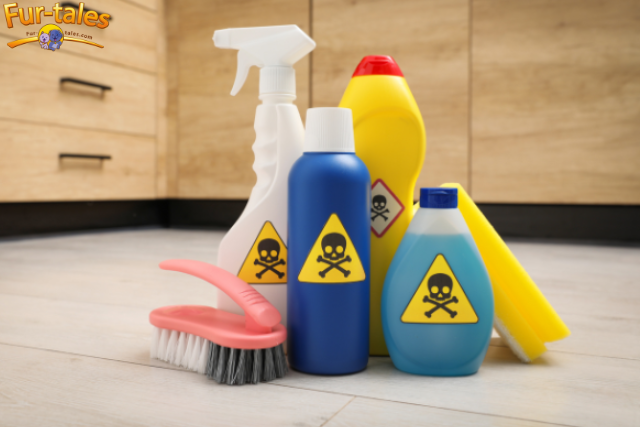
Understanding and Preventing Common Pet Poisons: A Comprehensive Guide
Our pets are beloved members of the family, offering us unconditional love, companionship, and joy. As responsible pet owners, it is our duty to protect them from harm—especially when it comes to accidental poisoning. Sadly, household poisons are one of the leading causes of emergency vet visits, and many pet owners are unaware of the dangers lurking right in their homes.
This comprehensive guide explores the most common pet poisons, compares their effects on dogs and cats, explains how poisoning happens, and provides actionable tips to prevent these tragic incidents. By becoming informed, you can make your home a safer place for your furry companions.
Why Pet Poisoning Happens
Pets, especially dogs and cats, are naturally curious. They explore their environment with their noses and mouths. Unfortunately, many everyday items that are safe for humans can be toxic or deadly to animals.
Common reasons for pet poisoning include:
- Lack of knowledge about what’s harmful
- Accidental ingestion of human medications or foods
- Spilled chemicals or unsealed containers
- Poor labeling or storage practices
- Plants or flowers brought into the home
Understanding what substances are dangerous is the first step toward prevention.
Most Common Pet Poisons (and How They Compare by Species)
1. Human Medications
Over-the-counter and prescription drugs are among the top causes of pet poisoning.
Common culprits:
- Acetaminophen (Tylenol)
- Ibuprofen (Advil, Motrin)
- Antidepressants
- Heart medications
- ADHD meds
Dogs may chew on pill bottles or pills dropped on the floor.
Cats are extremely sensitive to many human meds, especially acetaminophen, which can cause liver failure.
Symptoms:
- Vomiting, lethargy, seizures, drooling, kidney or liver damage
2. Household Cleaners and Chemicals
From bathroom bleach to laundry detergent, many cleaning products contain toxic ingredients for pets.
Especially dangerous:
- Bleach
- Ammonia
- Drain and toilet bowl cleaners
- Antifreeze (ethylene glycol)
Dogs may lick freshly cleaned floors or drink from toilets.
Cats, being fastidious groomers, may absorb chemicals from their fur after walking on surfaces.
Symptoms:
- Mouth burns, drooling, vomiting, respiratory distress, organ failure
3. Certain Human Foods
While some table scraps are safe, others are poisonous—even in small amounts.
Toxic foods include:
- Chocolate (especially dark chocolate)
- Grapes and raisins
- Xylitol (sugar substitute found in gum and peanut butter)
- Onions, garlic, and chives
- Alcohol and caffeine
Dogs are more likely to ingest toxic food due to their scavenging nature.
Cats are less food-motivated but are particularly sensitive to onion and garlic toxicity.
Symptoms:
- Vomiting, diarrhea, tremors, seizures, low blood sugar, liver/kidney failure
4. Plants and Flowers
Many popular houseplants and garden flowers are toxic to pets.
Dangerous plants include:
- Lilies (especially fatal to cats)
- Azaleas and rhododendrons
- Tulips and daffodils
- Aloe vera
- Poinsettias
Cats are notorious plant nibblers and are especially at risk from lilies, which can cause kidney failure from just a few chewed leaves.
Dogs may dig up bulbs or chew stems during walks or play.
Symptoms:
- Vomiting, lethargy, kidney failure, drooling, mouth burns
5. Rodenticides and Insecticides
Poisons designed to kill rodents and insects are extremely dangerous to pets.
Common examples:
- Rat poison (anticoagulant and neurotoxic types)
- Slug bait (contains metaldehyde)
- Ant baits
Dogs may sniff out and eat rodent bait, especially if it’s flavored.
Cats are more often poisoned by eating a rodent that consumed the bait.
Symptoms:
- Internal bleeding, seizures, vomiting, incoordination
6. Veterinary Medications (Overdose or Misuse)
Even medications designed for pets can be harmful in the wrong dose or when given to the wrong species.
Examples:
- NSAIDs like carprofen or meloxicam
- Flea treatments (dog versions used on cats)
- Heartworm prevention in excessive amounts
Symptoms:
- Vomiting, diarrhea, seizures, tremors, kidney or liver damage
7. Essential Oils and Diffusers
While aromatherapy can be soothing for humans, many essential oils are toxic to pets, especially cats.
Hazardous oils:
- Tea tree
- Eucalyptus
- Peppermint
- Citrus
- Clove and cinnamon
Cats lack the liver enzymes to process certain compounds found in essential oils, making them highly susceptible to toxicity. Dogs can also be affected, especially with direct skin application or ingestion.
Symptoms:
- Drooling, vomiting, breathing difficulty, tremors
Prevention Tips: Keeping Your Pets Safe
1. Store Products Securely
Keep medications, cleaners, and chemicals in locked cabinets or out of reach. Never leave pills on counters or nightstands.
2. Dispose of Waste Properly
Don’t leave trash, wrappers, or food scraps where pets can get to them. Always seal trash bins.
3. Avoid Unsafe Foods
Educate family members about what foods are toxic. Never feed table scraps without checking their safety.
4. Use Pet-Friendly Products
Choose cleaners and pesticides labeled as safe for pets. If unsure, opt for natural or vet-recommended alternatives.
5. Read Labels
Before using flea products, check that they are species-specific. Never use dog flea treatment on cats.
6. Educate Children and Guests
Make sure anyone interacting with your pet knows the dangers of giving treats or leaving items unattended.
7. Pet-Proof Your Home and Garden
Remove toxic plants and check backyard access for potential hazards. Install baby gates if needed to limit access.
8. Know Emergency Numbers
Keep the number for your vet and Pet Poison Helpline (1-855-764-7661) in a visible place.
What to Do If You Suspect Poisoning
- Stay calm but act quickly.
- Do not induce vomiting unless directed by a vet.
- Contact your vet or a poison hotline immediately.
- Provide information: what was ingested, how much, when, and your pet’s weight.
- Do not wait for symptoms to appear—early intervention is critical.
Time is of the essence. The faster your pet gets medical attention, the better the outcome.
FAQs: Pet Poisons and Prevention
Q: Are cats more sensitive to poisons than dogs?
A: Yes. Cats are more sensitive to certain toxins (especially essential oils and medications) because of how their liver processes chemicals.
Q: Is chocolate really dangerous?
A: Absolutely. Even small amounts can be toxic to dogs, depending on the type and their size. Dark chocolate is the most dangerous.
Q: What houseplants are safe for pets?
A: Spider plant, Boston fern, bamboo palm, and prayer plant are generally safe. Always verify before bringing new plants home.
Q: Are natural cleaners always safe for pets?
A: Not necessarily. Some “natural” products contain essential oils or other ingredients harmful to pets. Always check the label.
Q: Can a small amount of a toxic food kill a pet?
A: In some cases, yes. For example, even one or two grapes or raisins can lead to kidney failure in some dogs.
Conclusion: Knowledge Is the Best Protection
Pet poisoning is terrifying—but also largely preventable. By understanding the most common hazards, tailoring your prevention efforts to your specific pet, and being prepared for emergencies, you can create a safe environment where your pets can thrive.
Whether you share your home with a curious puppy, a mischievous cat, or a nosy rabbit, vigilance is key. Learn the risks, take precautions, and most importantly, act quickly if something goes wrong. Your pet’s life may depend on it.
Image Designed Using Canva
